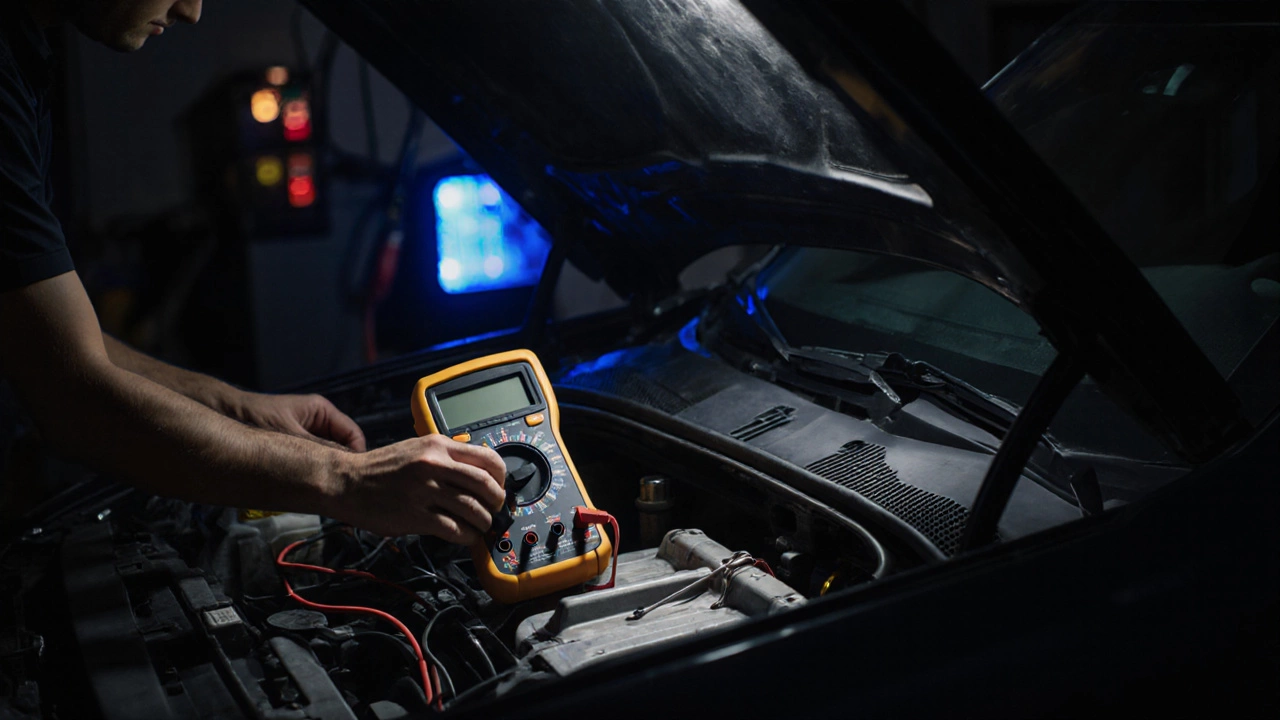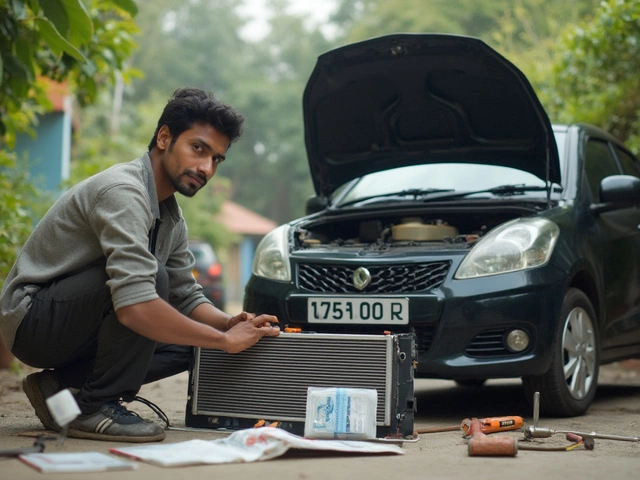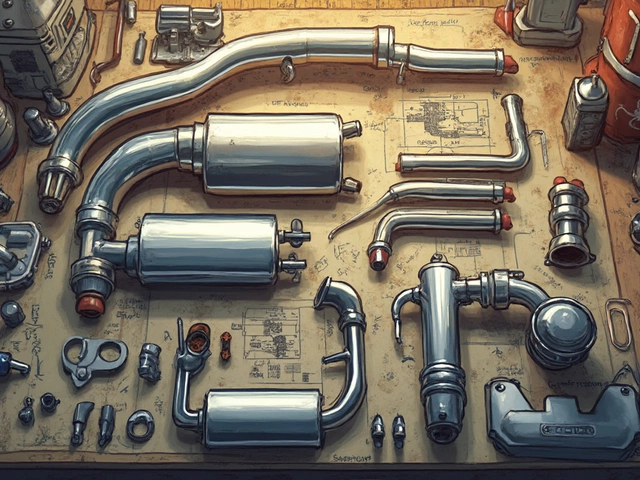If your car won’t start and you hear a quiet whine or nothing at all when you turn the key, you might be thinking: can you jump start a bad fuel pump? It’s a common question-especially when you’re stranded with a dead battery and a suspicious fuel system. But here’s the truth: you can’t jump start a fuel pump like you jump start a battery. And trying to do so won’t fix the real problem.
What a Fuel Pump Actually Does
A fuel pump isn’t a spark plug or a starter motor. It doesn’t need a jolt of electricity to fire up. It’s a quiet, electrically powered device buried inside your gas tank that pushes fuel from the tank to the engine at the right pressure. Modern cars use electric fuel pumps that run on 12 volts-same voltage as your battery. But unlike a starter, which draws hundreds of amps to crank the engine, a fuel pump only needs about 5 to 10 amps to run. That’s why it can’t be "jump started" in the traditional sense.
When your fuel pump fails, it’s usually because the motor inside has worn out, the impeller is cracked, or the filter screen is clogged with debris. These are mechanical failures. No amount of external power will bring it back to life. Even if you hook up jumper cables to your battery, the pump won’t magically start working if it’s already dead.
Why People Think Jump Starting Helps
There’s a reason this myth sticks around. Many people confuse a dead battery with a bad fuel pump. If your battery is low, the fuel pump might not get enough voltage to spin up. That means the car won’t start-not because the pump is broken, but because it’s not getting enough juice. When you jump start the car, the battery gets power, the pump spins, and the engine fires. So it looks like the pump was "fixed"-but it was never broken to begin with.
Here’s how to tell the difference:
- If you hear a brief humming noise from the rear of the car when you turn the key to "on" (before cranking), your fuel pump is getting power and likely still working.
- If you hear absolutely nothing-not even a click or buzz-then the pump isn’t getting power, or it’s dead.
- If the car starts after a jump but dies again once you turn it off, your battery is weak, not the pump.
One real case from a mechanic in Adelaide last year: a customer came in with a 2018 Toyota Camry that wouldn’t start. He swore the fuel pump was dead because "jumping it didn’t work." Turns out, the fuel pump relay had corroded. Replacing the $15 relay fixed everything. The pump was fine.
What Actually Happens When a Fuel Pump Fails
Fuel pumps don’t usually fail with a bang. They fade. Here’s how it typically goes:
- First, you notice hesitation when accelerating-especially uphill or under load.
- Then, the engine sputters at highway speeds, as if it’s running out of gas-even though the tank is half full.
- After that, the car struggles to start, especially when hot. This is a classic sign: the pump overheats and stops delivering pressure.
- Finally, it won’t start at all. No cranking issue. No spark problem. Just silence.
Most fuel pumps last between 100,000 and 150,000 kilometers. In Adelaide’s hot summers, they can wear out faster. Dust and debris from unpaved roads get into the fuel tank, and over time, they clog the pump’s intake screen. Cheap fuel with low detergent levels also accelerates wear.
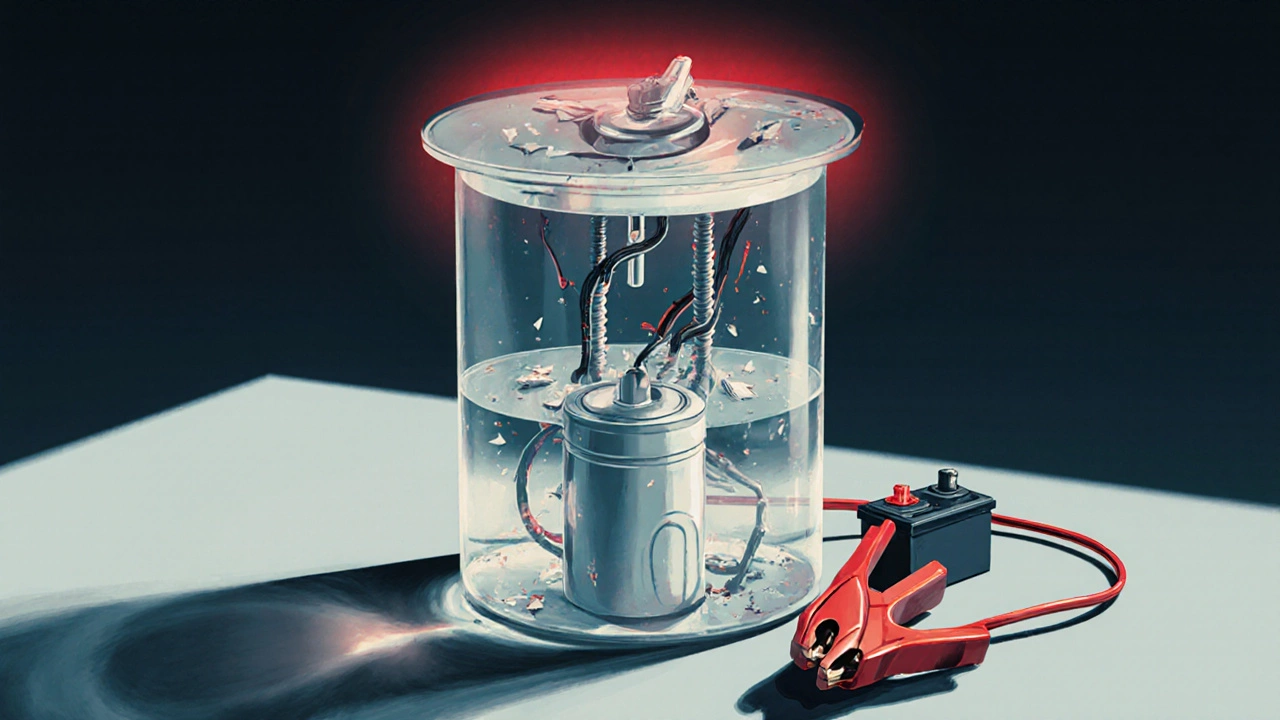
How to Test a Fuel Pump Without Jump Starting
Don’t waste time with jumper cables. Here’s how to check if your fuel pump is really dead:
- Turn the ignition to "on" (don’t start the engine). Listen near the fuel tank for a 2-3 second hum. If you don’t hear it, move to step two.
- Check the fuel pump fuse. Most cars have it in the engine bay fuse box. Look for a blown fuse-often labeled "FUEL PUMP" or "FP".
- Test the fuel pump relay. Swap it with another relay in the box (like the horn or A/C relay) and try again. If the car starts, the relay was bad.
- Use a fuel pressure gauge. Connect it to the fuel rail test port (if your car has one). Turn the key on. You should see 30-60 psi depending on the make. No pressure? Pump is dead or clogged.
- If you have no gauge, tap the bottom of the fuel tank gently with a rubber mallet while someone cranks the engine. Sometimes a stuck pump will spin up with a light tap. If it starts, you’ve confirmed the pump is failing and needs replacing soon.
These steps take less than 15 minutes. No tools needed beyond a fuse puller and maybe a screwdriver. If you’re not comfortable, a mechanic can test it in under 10 minutes with a scan tool that reads fuel pressure data.
What to Do If Your Fuel Pump Is Dead
If the pump is truly dead, here’s what you need to know:
- There’s no temporary fix. No spray, no additive, no jumper cable trick will restore it.
- Replacement is the only option. Most fuel pumps are inside the tank, so the tank has to be dropped. Labor costs range from $300 to $600 depending on the car.
- Always replace the fuel filter at the same time. It’s usually part of the pump assembly.
- Use OEM or high-quality aftermarket pumps. Cheap pumps from unknown brands fail within 6 months.
- Fill your tank with quality fuel. Premium or top-tier gasoline has better detergents that help prevent future clogs.
One common mistake: people buy a "fuel pump booster" or "electric fuel pump enhancer." These are just inline electric pumps that add pressure. They don’t fix a dead pump-they just mask the problem. And if your original pump is shedding metal debris, the booster will clog and fail too.
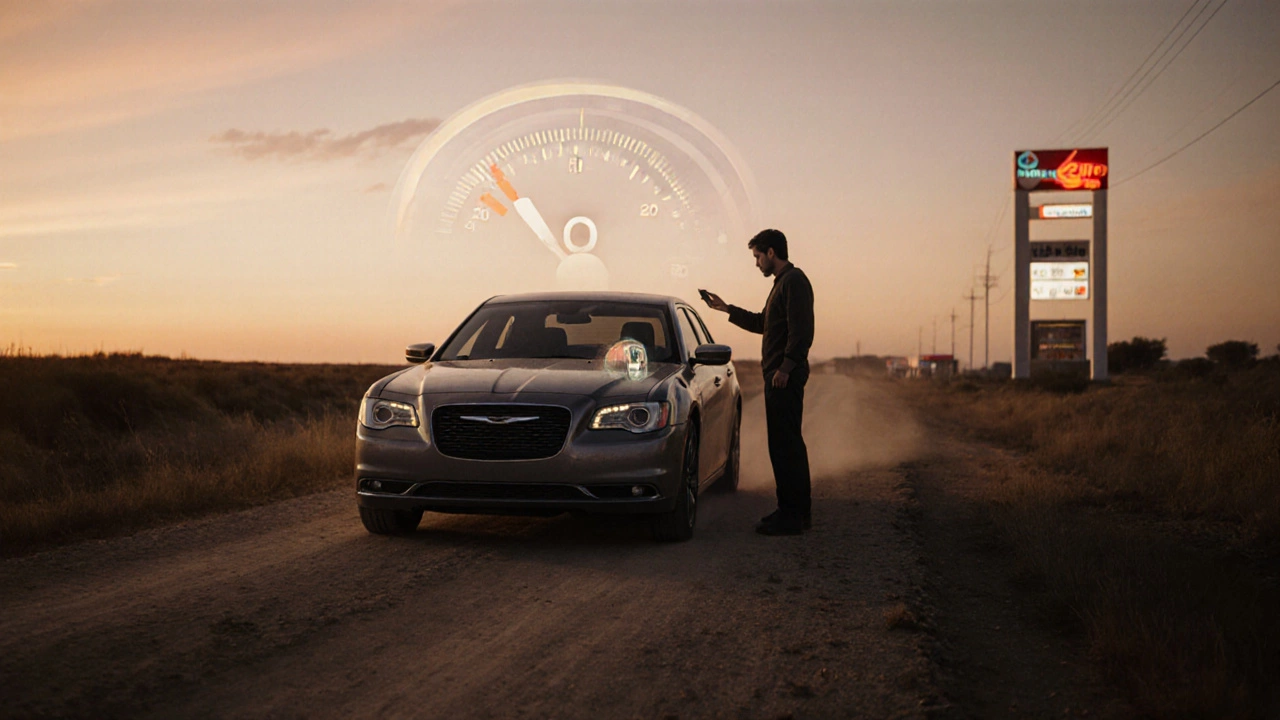
Preventing Fuel Pump Failure
Good habits can double the life of your fuel pump:
- Never run your tank below a quarter full. The fuel cools the pump. Running low makes it overheat.
- Use fuel with detergent additives. Brands like Caltex, Shell V-Power, or BP Ultimate are better than budget fuels.
- Replace the fuel filter every 40,000-60,000 km-even if the manual says "lifetime."
- Keep your gas cap sealed. A loose cap lets moisture in, which causes rust and sludge.
- Consider a fuel system cleaning every 80,000 km. It clears debris before it reaches the pump.
In Adelaide’s dry, dusty climate, these steps are even more important. Road dust gets into fuel tanks through vent systems, especially on gravel roads near the Barossa or McLaren Vale.
What Happens If You Ignore a Failing Fuel Pump
Ignoring a weak fuel pump doesn’t just mean you’ll get stranded. It can damage other parts:
- Low fuel pressure causes lean air-fuel mixtures, which can burn valves or damage the catalytic converter.
- Debris from a failing pump can clog fuel injectors-costing $400+ to clean or replace.
- Stranded vehicles in traffic or on highways create safety risks, especially in hot weather.
One owner in Port Adelaide drove for three weeks with a failing pump. The car sputtered every time he accelerated. He kept driving, thinking it was "just a fuel issue." Eventually, the catalytic converter turned red-hot and melted. Repair cost: $2,200. Replacing the pump when it first started acting up would’ve cost $500.
Final Answer: Can You Jump Start a Bad Fuel Pump?
No. You cannot jump start a bad fuel pump. Jumping the battery might get your car running if the battery was the issue-but it won’t fix a broken pump. If the pump is truly dead, no amount of external power will bring it back. The only fix is replacement.
Don’t waste time, money, or safety on myths. Test the fuse, check the relay, listen for the hum. If those are good and the pump still doesn’t work, replace it. It’s the only way to get back on the road for good.
Can a weak battery cause a fuel pump to fail?
No, a weak battery doesn’t cause a fuel pump to fail mechanically. But it can prevent the pump from working properly by not supplying enough voltage. If the battery is low, the pump may not spin up, making it seem like it’s broken. Once the battery is charged or replaced, the pump often works fine-unless it was already worn out.
Will fuel injector cleaner fix a bad fuel pump?
No. Fuel injector cleaner removes deposits from injectors and intake valves, but it won’t fix a worn motor, cracked impeller, or clogged screen inside the fuel pump. If the pump is failing mechanically, cleaner won’t help. It might help if the pump is struggling due to sludge-but only if the damage isn’t too far along.
Can you hear a bad fuel pump when the car is off?
No. You can only hear a fuel pump when the ignition is turned to "on" (before cranking) or when the engine is running. A bad pump might make a loud whining or grinding noise during operation-but not when the car is off. Silence when the key is turned to "on" usually means no power or a dead pump.
How long does a fuel pump replacement take?
Most fuel pump replacements take 2 to 4 hours. The tank has to be drained, lowered, and disconnected. Labor costs vary by car model-some have easier access than others. On older cars with external pumps, it can be done in under an hour. On newer models with in-tank pumps, it’s a full afternoon job.
Is it safe to drive with a failing fuel pump?
It’s risky. A failing pump can die at any time-especially under load, like on the highway or uphill. This can cause sudden stalling, which is dangerous in traffic. It can also damage the catalytic converter or fuel injectors. If you notice symptoms like hesitation or sputtering, get it checked before it leaves you stranded.
